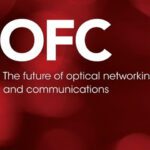Fiber Optics: The Most Efficient Way to Transport Data, Even in Harsh Environments
Many favorable attributes of fiber optic cables are readily acknowledged. However, a bias against using fiber optics in harsh environments remains.

Fiber Optic Cables
Fiber optic cables carry many times more data than is feasible over copper-based connectivity. This increased bandwidth is necessary for the highest definition video and other data intensive purposes, but the fact that optical signals travel at close to the speed of light is also vitally important. This makes near real-time data latency feedback requirements a reality. When attempting to target an inbound hypersonic missile, microseconds count, and optical cable is 99% faster than copper. Latency times and reliability are also of paramount importance in emerging applications such as autonomous driving or drone deliveries.
Fiber optics has other inherent benefits as well. It conducts no electricity and is completely immune to electromagnetic interference (EMI), generates no heat throughout the cable, and signals cannot be poached off fiber optics as they can easily be done in copper-based systems. Also, fiber optics is future-proof. The physics of light do not change, so the fiber optics being used today will essentially be the same a hundred years from now. Additionally, fiber optics has a fraction of the weight of copper. This is crucially important for aerospace applications where engineers work for days simply to save a pound of mass.
All these favorable attributes are readily acknowledged; however, there remains a bias against using fiber optics in harsh environments. Most of our everyday lives are not lived in such settings; our homes and offices are protected places where less vigorous equipment is used. Nevertheless, there are many applications where electronic equipment is exposed to more robust conditions that include temperature extremes, physical shock, high vibrations, intense electrical interference, atmospheric pressure fluctuations, water immersion, corrosive chemical exposure and many other harsh conditions that have the potential to disable the system that these electronics are intended to service. Such systems are most vulnerable at the interconnection devices.

Fiber optics is the perfect solution for high-reliability, high-performance, and quality signal integrity in extreme environments like agriculture, mil/aero, and space applications, where space and weight is limited.
At first glance, fiber optics may seem unsuitable for such applications. After all, a single mode optical fiber is just 9 micrometers (microns) of glass that is cladded (essentially insulated) up to 125 microns and then protected with a similar sized coating, typically up to 250 microns. For comparison’s sake, a human hair is nominally 70 microns in diameter. The common thinking is that optical fibers are delicate pieces of glass that are only suitable for use in conduit or a similarly protected location, but such beliefs need to be dispelled.
Another favorable attribute of fiber optics is that it employs all the same connector standards as copper, with all the noted protections, while providing for commonality among components. Engineers know these standards well and are familiar with navigating and specifying them. They include military specifications such MIL-DTL-38999 (D38999), ARINC, and the newer Sensor Open Systems Architecture (SOSA) connector standards.
In fact, the D38999 standard is used to protect the very common LC fiber optic connection method by Amphenol FSI (displayed above). LC connectors are used in everyday enterprise and datacom applications, but Amphenol’s version illustrates how it can be protected with the workhorse of harsh environment data connectors. The D38999 connector can even house the transmitter and receiver equipment needed for optical fiber signals. This is a harsh environment connector and signal converter in one housing, which component engineers have been specifying and using for generations.
However, a potentially unfavorable reality about fiber optics is that it is indeed more difficult to terminate than its copper cousins. For low-voltage copper, a simple metal to metal linking without regard to orientation is all that is required. For the seamless transference of a light wave, those connections must be made flush at the ends of each fiber optic side without contamination, clouding, or cracking of each surface. This requires a more refined set of skills and knowledge than most technicians who work with copper possess. Accordingly, fiber optics are more often provided as pre-terminated assemblies by optical experts.
It is crucial to work with a distributor that will provide product and application expertise, ideally at the earliest developmental stage, to specify either the correct discrete components or fully terminated assemblies. Once the environmental and data demands are understood, suitable product options will be proposed. These will then be honed throughout the development process.
Powell aims to educate engineers and end users, so they feel more comfortable working with fiber optic products in harsh environments and can create durable solutions that exceed performance expectations.
Visit the Preferred Supplier page for Powell Electronics to learn more about the company and its products.
Like this article? Check out our other articles on Cable, Fiber Optics, our Wire and Cable Assemblies Market Page, and our 2023 and 2022 Article Archive.
Subscribe to our weekly e-newsletters, follow us on LinkedIn, Twitter, and Facebook, and check out our eBook archives for more applicable, expert-informed connectivity content.






